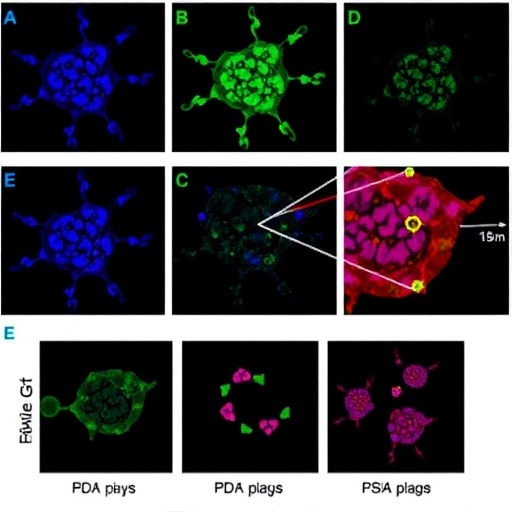In the relentless battle against lung cancer, a groundbreaking study has recently illuminated a novel molecular target that could revolutionize treatment paradigms. Researchers have identified SOX2 overlapping transcript (SOX2OT), a long non-coding RNA (lncRNA), as a key regulator in lung cancer cell viability and migration. By silencing SOX2OT, the team observed substantial reductions in the aggressiveness of lung cancer cells, offering a promising therapeutic avenue that harnesses RNA biology to curb tumor progression.
Lung cancer, notorious for its high mortality rate, has long challenged oncologists and researchers due to its complex molecular landscape and resistance to conventional treatments. The latest findings delve into the intricate world of lncRNAs, a category of RNA molecules that, unlike messenger RNAs, do not code for proteins but play pivotal roles in regulating gene expression. SOX2OT, residing within the SOX2 gene locus, has emerged as a significant player in oncogenesis, influencing both genetic and epigenetic processes that sustain tumor growth and dissemination.
The research team employed advanced gene-silencing techniques to inhibit SOX2OT expression in lung cancer cell lines. This intervention resulted in a marked decrease in cell viability, suggesting that SOX2OT supports the survival mechanisms of malignant cells. Intriguingly, the suppression of SOX2OT also hindered the migratory capabilities of these cells, which is crucial in understanding metastasis—the process by which cancer spreads to distant organs and drastically worsens prognosis.
At the molecular level, the study revealed that silencing SOX2OT disrupts complex regulatory networks involving both lncRNAs and proteins. These networks orchestrate vital cellular functions, including proliferation, apoptosis resistance, and motility, underscoring SOX2OT’s multifaceted role in lung cancer pathophysiology. The findings suggest that SOX2OT acts as a molecular hub integrating diverse signaling pathways that collectively propel tumor aggressiveness.
The implications of targeting SOX2OT extend beyond a single RNA molecule. Given the emerging recognition of lncRNAs as master regulators in cancer, therapies designed to modulate their activity could unlock unprecedented strategies to combat malignancies. Current efforts predominantly focus on protein-coding genes; thus, lncRNA-centric approaches, as demonstrated by SOX2OT silencing, could represent a paradigm shift in oncology, offering specificity and reduced toxicity.
One of the study’s remarkable aspects was the detailed mapping of the downstream consequences following SOX2OT inhibition. The researchers documented alterations in the expression of several oncogenes and tumor suppressor genes previously unlinked to SOX2OT. This broad regulatory influence highlights the complexity and interconnectedness of cancer signaling networks, where a single lncRNA can exert extensive control over cellular fate decisions.
Moreover, the observed decrease in cell migration upon SOX2OT suppression provides crucial insights into metastasis prevention. Migration is a prerequisite for cancer cells to invade surrounding tissues and enter the bloodstream, making metastasis the leading cause of cancer-related mortality. Intervening at the level of lncRNA regulation could abrogate key steps in this deadly process, translating to improved survival outcomes for patients.
From a therapeutic development perspective, the study serves as a proof of concept for RNA interference (RNAi) technologies targeting lncRNAs. Although RNAi has been extensively explored for protein-coding genes, its application to non-coding RNAs like SOX2OT is relatively novel and could circumvent some challenges inherent in targeting proteins, such as structural complexity and redundancy. This highlights the versatility of RNA-based therapeutics in oncology.
Furthermore, the research underscores the importance of integrating multi-omics analyses—combining transcriptomic, proteomic, and epigenomic data—to fully understand the role of lncRNAs in cancer biology. The authors utilized sophisticated bioinformatics models to decode the regulatory cascades influenced by SOX2OT, reinforcing the necessity of systems biology approaches in modern cancer research.
The translational potential of these findings also sparks hope for personalized medicine. Since lncRNA expression profiles vary widely among tumor types and individual patients, assessing SOX2OT levels could serve as a diagnostic biomarker or stratification tool to identify those who would most benefit from lncRNA-targeted therapies. Tailoring interventions based on such molecular signatures could enhance therapeutic efficacy and reduce side effects.
Importantly, this study opens the door for exploring combination therapies that integrate SOX2OT silencing with existing chemotherapeutics or immunotherapies. By weakening cancer cells’ defensive mechanisms and migratory capacity, SOX2OT inhibition could sensitize tumors to other treatments, overcoming resistance and leading to more durable remissions.
Notwithstanding its promise, the study also acknowledges the challenges ahead. Delivering RNA-targeting agents efficiently and specifically to tumor tissues remains a significant hurdle. Advances in nanoparticle-based delivery systems and targeted vectors will be critical to translate these laboratory findings into clinical reality. Safety profiles and off-target effects of lncRNA silencing agents warrant rigorous evaluation.
In sum, the discovery that silencing SOX2OT diminishes lung cancer cell viability and migration heralds a novel frontier in cancer therapeutics centered on lncRNA biology. This research not only enriches our molecular understanding of lung cancer progression but also charts a course toward innovative treatments that could significantly improve patient outcomes. As the field of RNA therapeutics continues to evolve, studies like this illuminate the path to harnessing the “dark matter” of the genome for clinical benefit.
The study’s comprehensive approach, integrating molecular biology, genomics, and cellular assays, exemplifies the rigor essential for pioneering breakthroughs. As lung cancer remains a formidable challenge globally, the strategic targeting of lncRNAs such as SOX2OT offers hope for more effective interventions in the near future.
Overall, these findings amplify the critical role of lncRNAs in oncogenesis, expanding the landscape of molecular targets beyond canonical protein-coding genes. They affirm that the regulatory complexity of cancer involves layers of control governed by non-coding RNA species, opening a vast, largely untapped reservoir of therapeutic possibilities.
With continued research and technological innovation, the silencing of SOX2OT and similar lncRNAs may soon transition from experimental models to clinical applications, transforming how we diagnose, treat, and ultimately conquer lung cancer.
Subject of Research: The role of the long non-coding RNA SOX2OT in lung cancer cell viability and migration.
Article Title: Silencing SOX2OT reduces viability and migration in lung cancer cells via lncRNA and protein regulation.
Article References:
Zarei, M., Dinari, A., Jahangiri, B. et al. Silencing SOX2OT reduces viability and migration in lung cancer cells via lncRNA and protein regulation. Med Oncol 42, 528 (2025). https://doi.org/10.1007/s12032-025-03085-6
Image Credits: AI Generated
Tags: epigenetic regulation in tumorsgene silencing techniques in cancerlong non-coding RNA in cancerlung cancer cell viabilitylung cancer treatment researchmolecular targets for lung canceroncogenesis and lncRNAsRNA biology in oncologysilencing SOX2OT effectsSOX2 overlapping transcripttherapeutic strategies for lung cancertumor cell aggressiveness reduction



